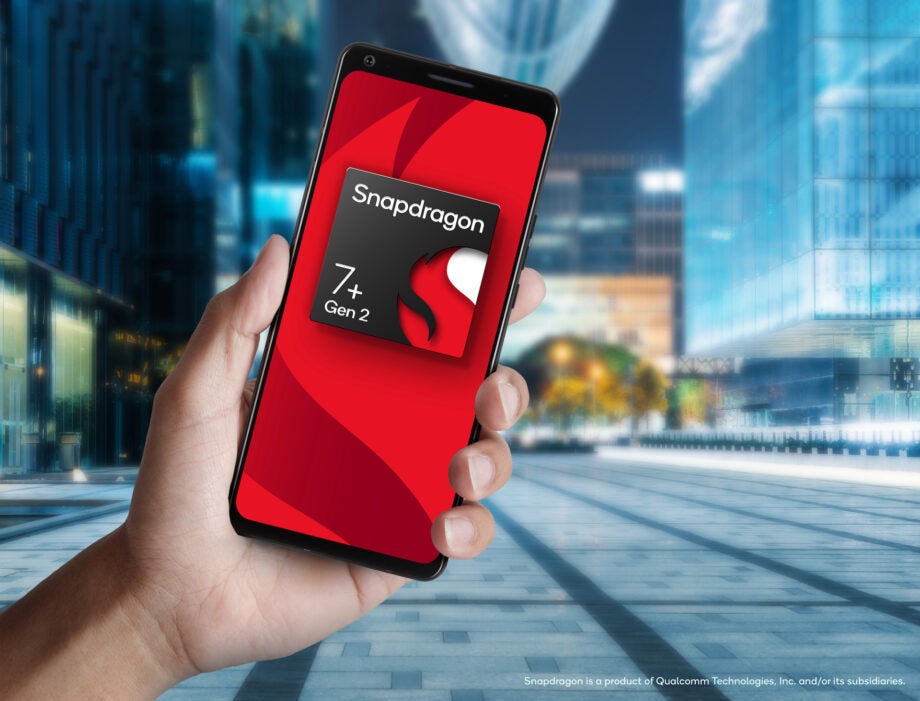What is the Snapdragon 7 Plus Gen 2? The mid-range chipset explained

Qualcomm’s latest mid-range chipset, the Snapdragon 7 Plus Gen 2, is official and is starting to appear in mid-range smartphones in 2023. The question is, what’s so special about the Snapdragon 7 Plus Gen 2 and, more importantly, which smartphones use it?
Boasting significant CPU and GPU gains, improvements to AI efficiency and a whole host of gaming and camera-related features on offer, it certainly looks like a tempting alternative to the flagship Snapdragon 8 Gen 2 on paper.
However, while you might assume there would be wide adoption of Qualcomm’s latest mid-range chipset, that’s not quite the case – so far in 2023, anyway.
Here’s everything you need to know about the mid-range Qualcomm Snapdragon 7 Plus Gen 2 chipset right now.
What is the Snapdragon 7 Plus Gen 2?
The Snapdragon 7 Plus Gen 2 is the latest chipset from Qualcomm, offering solid performance just below the flagship level where its 8 Series chipset sits.
It’s not a simple bump in numbers either, with a huge boost to performance compared to the first-gen Snapdragon 7 Gen 1 chipset. According to Qualcomm, the Kryo CPU within the chipset boasts a 50 percent increase in processing power compared to its predecessor, while the Adreno GPU boasts a whopping 2x boost.
Of course, there’s more to the chipset than pure power improvements with plenty of new features for smartphone manufacturers to take advantage of, but we’ll get to that in a second.
What benefits does the Snapdragon 7 Plus Gen 2 bring?
Aside from the sheer boost to performance, both in terms of the CPU and GPU, the Snapdragon 7 Plus Gen 2 has other tricks up its sleeve to help improve the experience on offer from mid-range smartphones.
When it comes to graphics, the new chipset supports Auto Variable Rate Shading, also known as VRS, that helps boost efficiency by only rendering foreground elements at full resolution. There’s also Volumetric Rendering capabilities available that’ll allow developers to implement more realistic-looking fog and smoke in upcoming mobile titles.
The chipset should also be more efficient at AI-related tasks with a 2x improvement to AI processing speeds and 40% better performance per Watt than the 7 Gen 1 too.
Mid-range camera capabilities should also be enhanced by the new chipset, with the chipset supporting an 18-bit Triple ISP that should allow for significant low-light performance. It also has the ability to capture 30 images and merge the best part of each individual image into one final shot, further improving the quality of shots captured.
Other notable improvements to cameras with the 7 Plus Gen 2 include the ability to take full-res 200MP images from those 200MP sensors we’ve seen appearing on smartphones in 2023, and staggered HDR video looks to capture with triple exposure from two cameras simultaneously.
It’s worth pointing out, however, that just because the chipset can do these things, it doesn’t mean your Snapdragon 7 Plus Gen 2-equipped smartphone will be able to. It’s down to manufacturers to implement the tech, and many simply don’t use everything on offer from these mobile chipsets.
Which phones feature the Snapdragon 7 Plus Gen 2?
This one’s a little trickier to answer as very few smartphones actually feature the new chipset, with most mid-rangers opting for the slightly older (and, we’re assuming, slightly cheaper) Snapdragon 7 Gen 1 chipset.
With that said, the chipset is exclusive to a small handful of smartphones including the Poco F5 at the time of writing despite being readily available since March. As the benchmark tests from our review show, the chipset is on a par with the top-end Snapdragon 8 Gen 2 in terms of CPU performance, but it doesn’t quite have the same level of graphical grunt.
It’s this parity that could see manufacturers simply opt for a slightly older ‘flagship’ 8 Gen chipset to help make mid-range phones look more attractive – something we’ve seen from the likes of the Snapdragon 8 Plus Gen 1-equipped Realme GT 3.
With that said, it’s still likely that we’ll the Snapdragon 7 Plus Gen 2 appear in some mid-range smartphones (around the £400-600 mark) going forward.
What happened to the Snapdragon 7 Plus Gen 1?
While the Snapdragon 7 Gen 1 chipset is available in a range of mid-range smartphones in 2023, the same can’t be said for the Snapdragon 7 Plus Gen 1 – the theoretical middle child between Qualcomm’s first and latest chipset.
For unknown reasons, Qualcomm simply decided to skip the 7 Plus Gen 1 chipset, going straight from the initial 7 Gen 1 to the 7 Plus Gen 2 we’ve discussed here. Odd, right?


